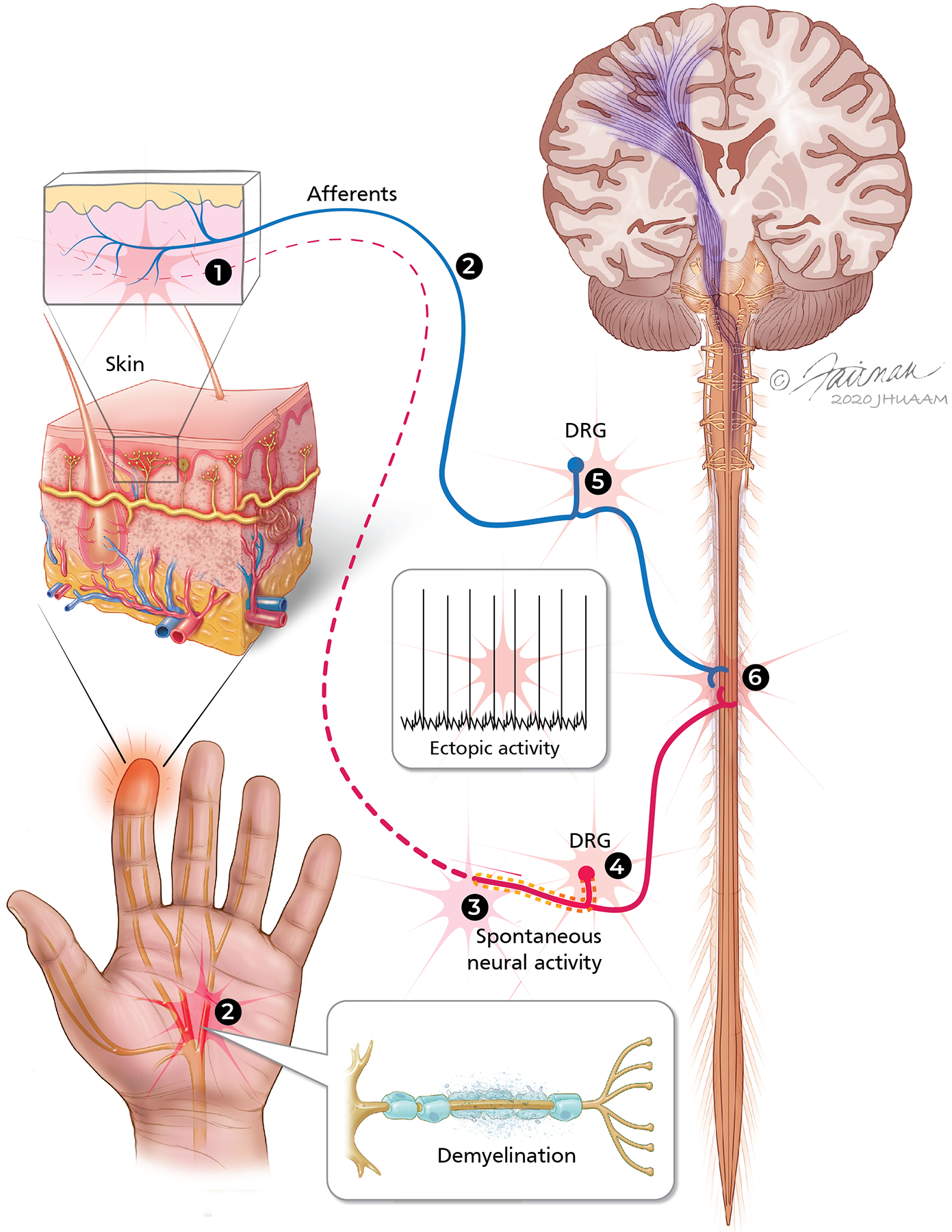Figure 4.

Sites in the peripheral nervous system where spontaneous and ectopic activity and hyperexcitability may represent potential targets for developing neuropathic pain therapeutic strategies. (1) In the periphery, hyperactivity in nociceptive afferent fibers may develop from several mechanisms. Wallerian degeneration of the distal part of the injured nerve exposes axons from uninjured portions of the nerve to a milieu of cytokines and growth factors that sensitize nociceptors and cause sprouting of terminals. In addition, afferent terminals dying back from the epidermal innervation may be potential sites of ectopic activity in idiopathic, toxic, and HIV neuropathies. (2) Localized axon demyelination in peripheral nerves may represent sites of ectopic activity in metabolic neuropathies. (3) Ectopic activity and sensitivity to mechanical stimuli develop at the site of nerve injury/neuroma. (4) Spontaneous neural activity develops in dorsal root ganglia (DRG) at the injury level owing to dysregulation of ion channels, loss of trophic support from the periphery, and changes in gene regulation. (5) Increased trophic factors transported from the periphery may cause hyperactivity in the uninjured DRG owing to altered expression of different molecules.
